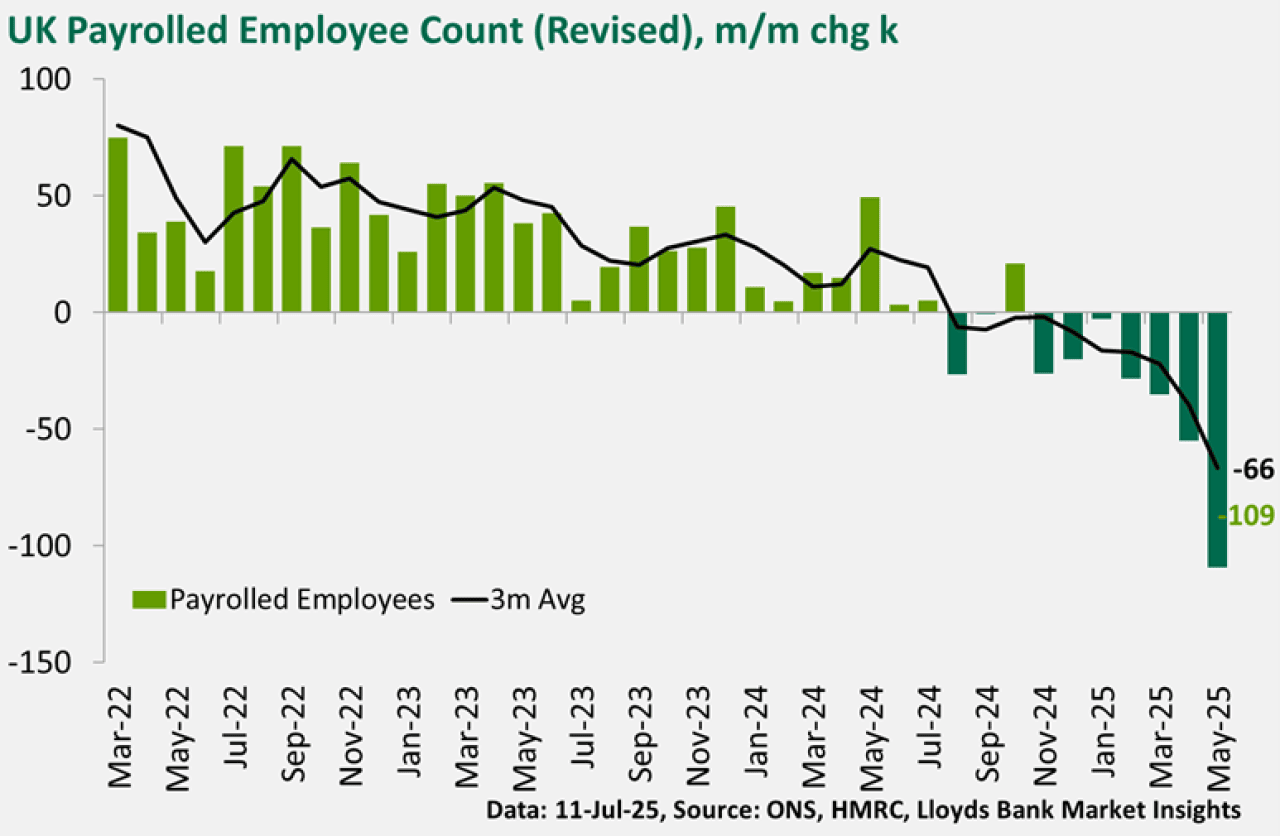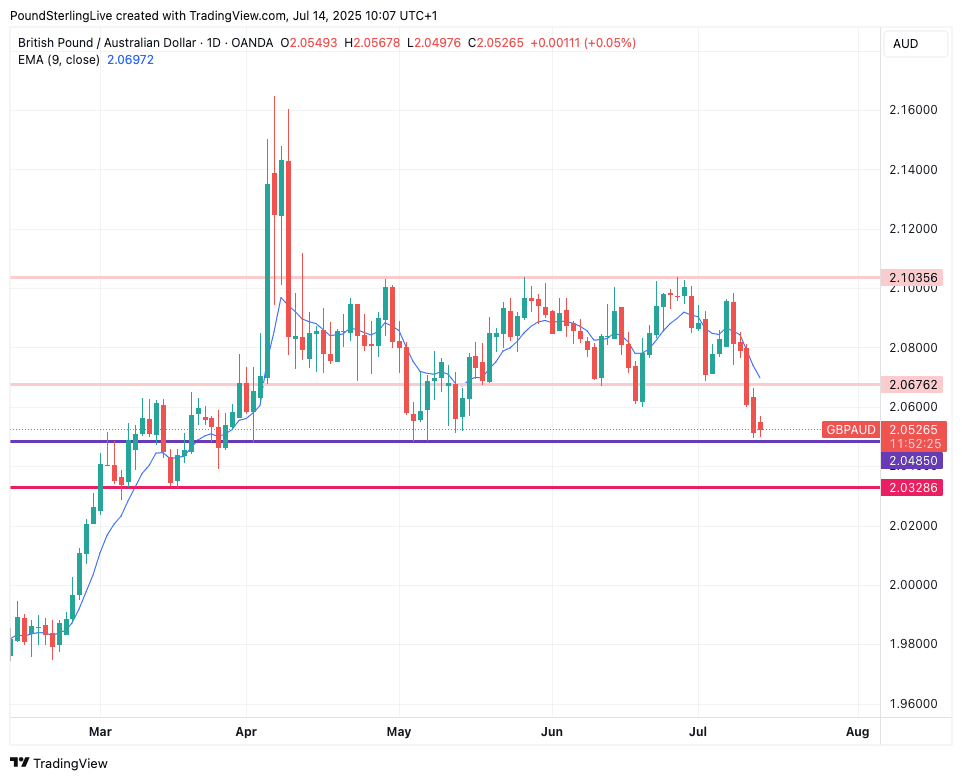
Image © Adobe Images
The Australian Dollar has some solid backing.
The Pound to Australian Dollar exchange rate (GBP/AUD) retains a heavy feel and is liable to register further losses.
However, before those losses evolve, our Week Ahead Forecast model would look for a shallow rebound.
The reasoning is simple: the selloff of the past three trading days has been quite deep and leaves GBP/AUD deviated from its nine-day exponential moving average (EMA).
As such, it is somewhat oversold on short-term timeframes, and there is scope for a move higher.
As the chart shows, the 9-day EMA is at 2.0696, while the market is also encountering some buying interest at a horizontal support line at 2.0485:
This gives some reinforcement to the notion that a recovery is possible over coming hours and 1-2 days.
That being said, the prospect of a break below the 2.0485 support area is increasingly likely, and a move to 2.0328, the lower end of the March 2025 range, is a distinct possibility.
Why are we favouring the downside?
There are some positives building in the Aussie Dollar's camp, with China showing its resilience in the face of U.S. tariffs and trade uncertainty.
China printed a record trade surplus of about $586BN in the first half of the year after exports to the U.S. began to stabilise.
This is important for Australia, given that China is a significant demand engine for Australian output, explaining why the Aussie Dollar is considered a proxy for China exposure.
"Investor concerns about US tariffs and a global trade war have likely peaked. A narrowing down of the global trade
war to one between the US and China, while less negative for the AUD, would be less than a global trade war," says David Forrester, FX Strategist at Crédit Agricole.
Forrester also thinks China’s government will continue stimulating the economy to offset the drag on growth from U.S. tariffs.
The British Pound, meanwhile, looks to be vulnerable to a deeper pullback against most of its peers.
If there is one chart readers will find useful in explaining the UK's predicament, it is the following:

It shows the significant deterioration in the labour market following the implementation of new policies under the Labour Government, which won the election one year ago.
The bottom line is an economy that will start to see wage growth come under pressure, which will weigh down on inflation.
The Bank of England is aware of this: Governor Andrew Bailey said on Monday the Bank stands ready to accelerate the rate at which it cuts interest rates if more "slack" opens up. Slack is just a euphemism for an economy that is shedding jobs and undergoing weak growth.
With the prospect of more Bank of England rate cuts rising, the Pound is coming under pressure.
With this in mind, watch Wednesday's UK inflation release and Thursday's job & wage figures: both are unlikely to make happy reading for those betting on a stronger Pound.
Economists are forecasting an unchanged headline annual rate of CPI inflation at 3.4%, partly as higher pressure from food prices is offset by a lower trend in services. Core CPI inflation is also expected at a stable rate of 3.5%.
Note any upside surprises are not necessarily going to help Sterling as it would imply a stagflationary environment, i.e. higher inflation and low growth. This is rarely supportive of a currency.

